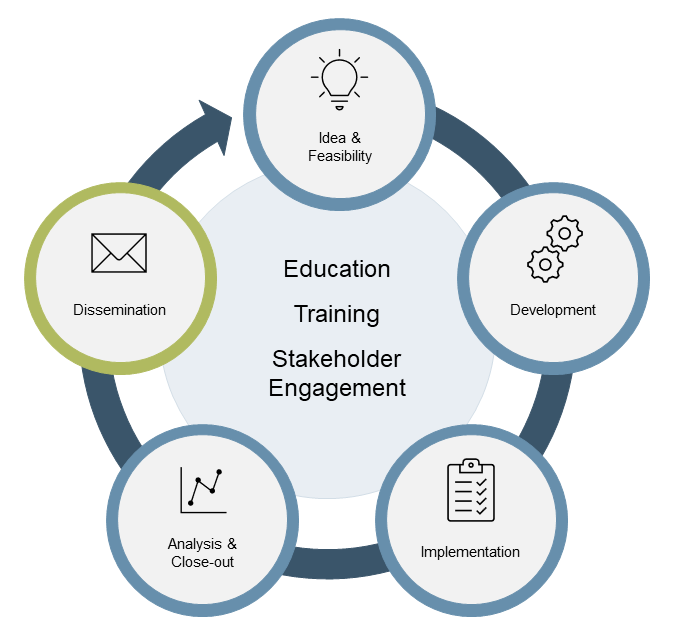Dissemination of Research Results
Dissemination of Research Results
What is dissemination?
Dissemination is “the intentional, active process of identifying target audiences and tailoring communication strategies to increase awareness and understanding of evidence and motivate its use in policy, practice, and individual choice” (PCORI ).1 Simply put, dissemination is about getting research results to the people who can benefit from those findings.
Why is dissemination important?
The goal of dissemination is to enhance the awareness and uptake of research findings. Dissemination is most often addressed by researchers through scientific manuscript publications and presentations. However, this limits the reach to those who could benefit from knowing the results, such as research participants and the general public. Communicating research findings beyond traditional academic and scientific communities is a vital component to research dissemination.
In addition, many funding organizations are now requiring dissemination of results as standard practice, making it imperative to think about dissemination from the very beginning of a research idea.
Disseminating research findings also increases transparency, helps to build trust, and provides value to research participants.2
When should dissemination be considered?
Whether you are writing a grant application, conducting a study, or ready to publish research results, disseminating research findings is relevant at all phases of research, including:
Research idea or grant development: When developing a research idea or writing a grant application, it’s important to think about dissemination of research findings from the very beginning. In fact, many federal grants now require applicants to submit a dissemination plan as part of their grant application.
Study implementation: When a study is being implemented, there are many opportunities to engage in dissemination. While there are often constraints with communicating study results prior to publishing main outcomes, many research teams choose to provide project updates to study participants and other key stakeholders. Maintaining stakeholder engagement during study implementation is also an important consideration for creating a well thought out dissemination plan.
Data analysis and study close-out: When study data is being analyzed and reports and manuscripts are being written, this is a critical time to simultaneously develop lay-friendly, easy to understand research summaries. These summaries can be disseminated to key audiences, such as study participants, community partners, study recruitment sites, and the general public.

What does our website offer?
This website offers tools and examples that have been created for researchers and community organizations that conduct research to use and share study findings in everyday, easy-to-understand language. To access these resources, use the navigation menu on the left-hand side.
1 Mathematica Policy Research. Patient-Centered Outcomes Research Institute (PCORI) Dissemination & Implementation Toolkit, 2015.
2 McDavitt B, Bogart LM, Mutchler MG, et al. Dissemination as dialogue: Building trust and sharing research findings through community engagement. Prev Chronic Dis. 2016;13:150473. doi: http://dx.doi.org/10.5888/pcd13.150473